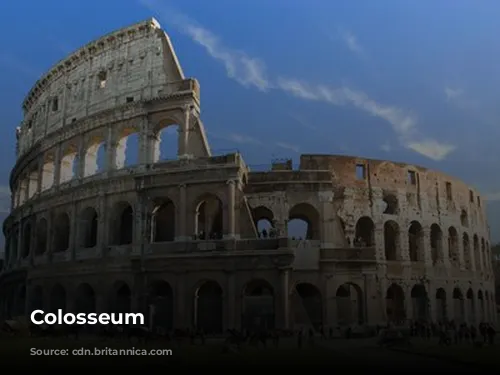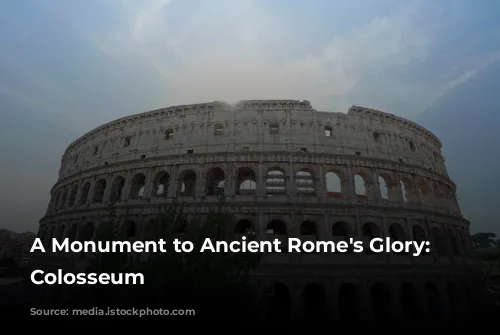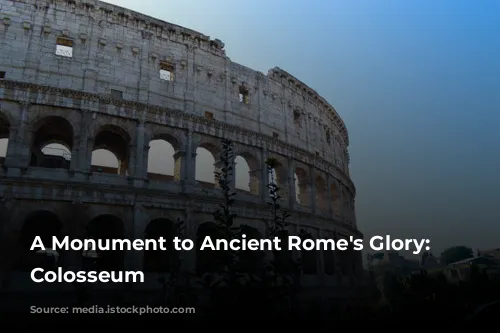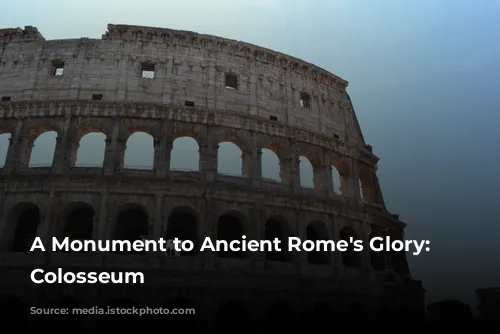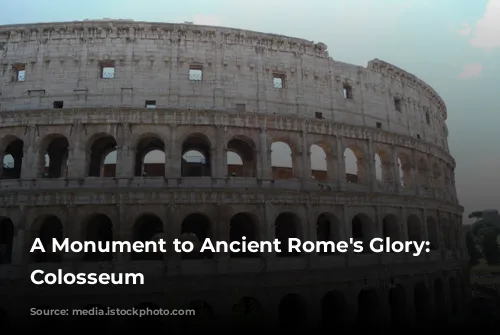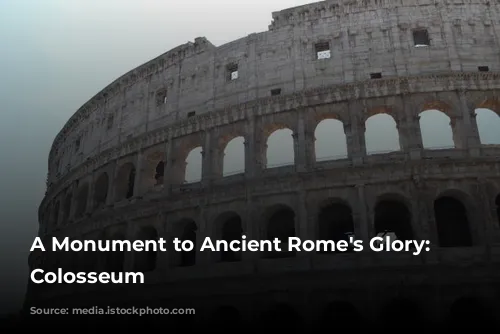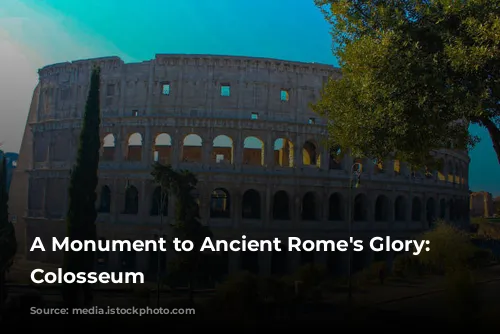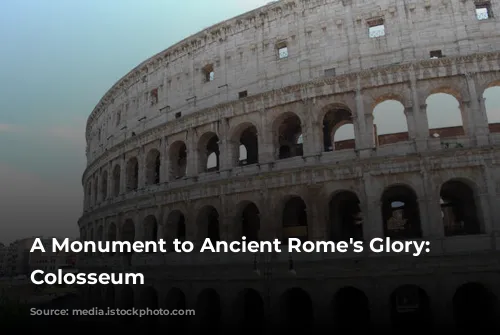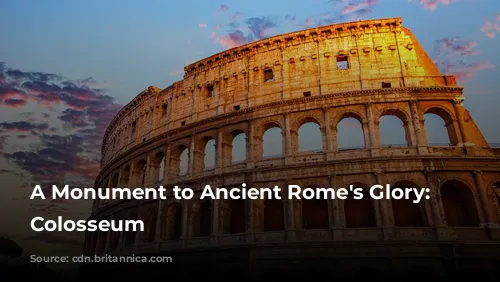Standing proudly as one of the few mostly intact structures from the Roman Empire, the Colosseum is a timeless testament to ancient Rome’s architectural and engineering prowess. Its grandeur not only captivates visitors but also fuels the Italian government’s tourism income. In 2018, the Colosseum, Roman Forum, and Palatine Hill together raked in a staggering $63.3 million (€53.8 million), making them the most lucrative tourist attraction in all of Italy. This speaks volumes about the enduring allure of Rome’s ancient heritage.
The Colosseum’s journey through time has been marked by periods of both glory and neglect. After the fall of the Western Roman Empire, the once majestic arena fell into a state of disrepair. In the 12th century, the Frangipane and Annibaldi families transformed it into a fortress, using its imposing structure to assert their power. The late 15th century saw a further decline as Pope Alexander VI permitted the Colosseum to be used as a quarry, its valuable materials plundered for other projects. For over a thousand years, the Colosseum was left to decay, a stark reminder of the passage of time. It wasn’t until the 1990s that state-funded restoration efforts finally breathed life back into this ancient marvel.
The Colosseum: A Legacy of Imperial Ambitions
The Colosseum’s construction was a testament to the Roman Empire’s desire to revitalize Rome after the tumultuous year of the four emperors in 69 CE. Emperor Vespasian, known for his pragmatic approach, intended the Colosseum to be a magnificent entertainment venue, a place to captivate the masses with spectacles of gladiatorial combat, thrilling animal hunts, and even mock naval battles. These events were not just about entertainment; they served as a powerful symbol of Rome’s dominance and a way to appease the people after a period of instability.
The Colosseum’s construction began under Vespasian’s reign between 70 and 72 CE. His son and successor, Titus, dedicated the completed structure in 80 CE, marking a significant moment in Rome’s history. The Colosseum’s fourth story was added later by Emperor Domitian in 82 CE, further enhancing its majestic stature. It’s worth noting that the arena was financed with plunder from Titus’s sacking of Jerusalem in 70 CE, and its construction involved enslaved Jewish laborers from Judaea. This historical detail adds a layer of complexity to the Colosseum’s narrative, reminding us of the brutal realities of the Roman Empire.
An Architectural Masterpiece: The Colosseum’s Design and Construction
The Colosseum, officially known as the Flavian Amphitheatre, is an elliptical structure built of stone, concrete, and tuff, reaching a height of four stories. It’s a colossal structure, measuring 620 by 513 feet (189 by 156 meters), with a capacity to hold up to 50,000 spectators. Its impressive size and grandeur are immediately apparent to visitors. The Colosseum’s use for gladiatorial combat is legendary, making it an iconic symbol of ancient Rome’s brutal yet fascinating entertainment.
The Colosseum’s location, east of the Palatine Hill, was carefully chosen. It occupied the site of Nero’s Golden House, a lavish palace complex, and replaced the artificial lake that served as its centerpiece. This deliberate decision was as much symbolic as practical. Vespasian, who rose to power from humble beginnings, replaced the tyrannical emperor’s extravagant private lake with a public amphitheater that could accommodate tens of thousands of Romans. This choice was a clear statement of his commitment to the people and a symbolic rejection of Nero’s extravagance.

A Structure for the People: The Colosseum’s Features and Function
The Colosseum was formally dedicated in 80 CE by Titus with a grand ceremony featuring 100 days of games, a testament to its significance. Domitian later completed the construction in 82 CE by adding the uppermost story, adding to its grandeur and architectural complexity. Unlike earlier amphitheaters, which often relied on natural hillsides for support, the Colosseum is a freestanding structure, built with a complex system of barrel vaults and groin vaults. This innovative design allowed for its massive size and impressive stability, a testament to Roman engineering ingenuity.
The Colosseum’s exterior is adorned with three stories of arcades framed by engaged columns in the Doric, Ionic, and Corinthian orders, creating a visually stunning and architectural masterpiece. This rising arrangement of columns became a key element of Renaissance architecture, known as the “assemblage of orders.” The main structural framework and facade are made of travertine, while the secondary walls are constructed of volcanic tufa. The inner bowl and arcade vaults are made of concrete, showcasing the Romans’ mastery of construction materials.
A Thriving Spectacle: The Colosseum’s Events and Entertainment
The Colosseum’s design was not just for show. It was built with the comfort and entertainment of the spectators in mind. It could seat approximately 50,000 people, who were protected from the sun by a massive retractable velarium (awning). The Colosseum’s top story, or attic, housed supporting masts that extended from corbels, and hundreds of Roman sailors were responsible for manipulating the rigging to extend and retract the velarium. This intricate system demonstrates the Romans’ attention to detail and their dedication to creating a comfortable and enjoyable experience for their citizens.
The Colosseum was the stage for a variety of spectacular events. Thousands of hand-to-hand combats between gladiators, contests between men and animals, and even larger battles, including mock naval engagements, thrilled the crowds. It was a place of spectacle and excitement, a testament to the Romans’ love for entertainment and their mastery of stagecraft. While the Colosseum’s connection to the martyrdom of early Christians is uncertain, it is an idea that has captured the imagination of many.
The Colosseum’s Legacy: From Ruin to Restoration
During medieval times, the Colosseum experienced a period of decline. It was repurposed as a church, then used as a fortress by the prominent Roman families, the Frangipane and the Annibaldi. Over time, the Colosseum suffered from the ravages of lightning strikes, earthquakes, and even more severe damage from vandalism and pollution. The marble seats and decorative materials were stripped away, leaving the site as little more than a quarry for over a thousand years.
However, the Colosseum’s story did not end there. Preservation efforts began in earnest in the 19th century, with notable contributions from Pius VIII, and a comprehensive restoration project was undertaken in the 1990s. Today, the Colosseum stands as one of Rome’s most popular tourist attractions, welcoming close to seven million visitors annually. Regularly changing exhibitions related to the culture of ancient Rome are held, adding another layer of interest for visitors. The Colosseum’s enduring popularity is a testament to its historical significance and its enduring appeal.

